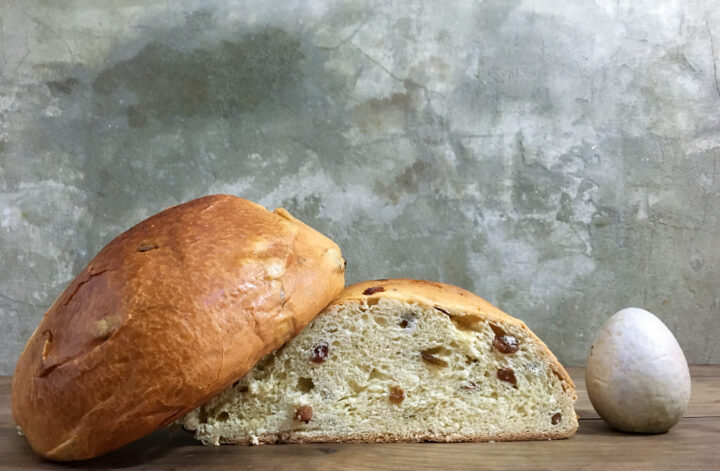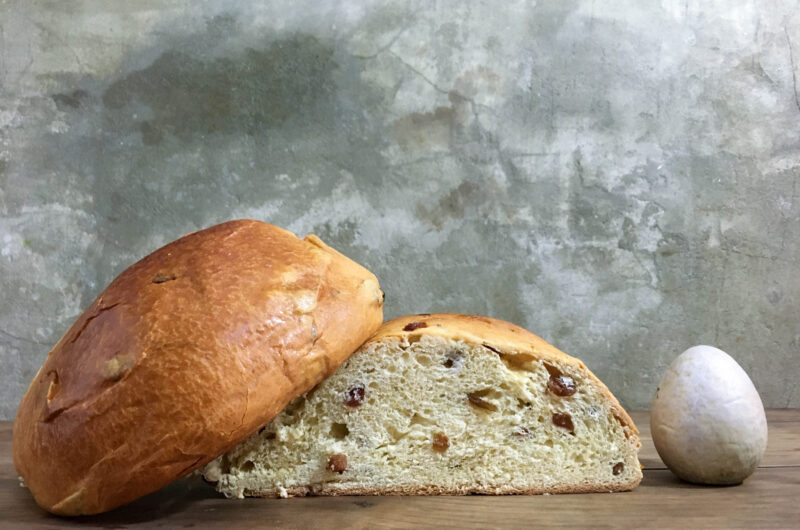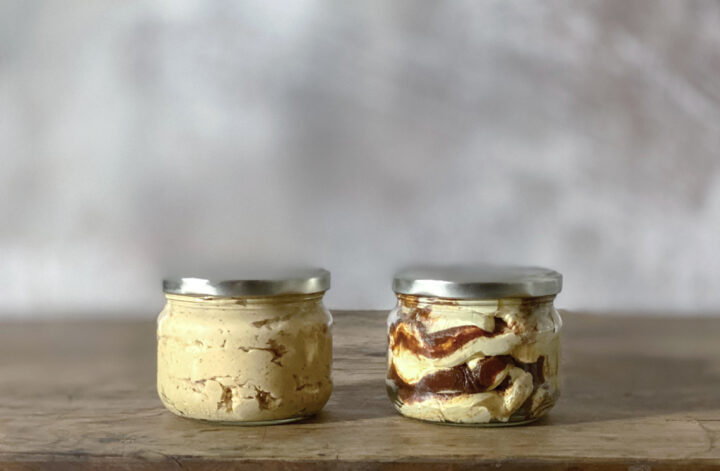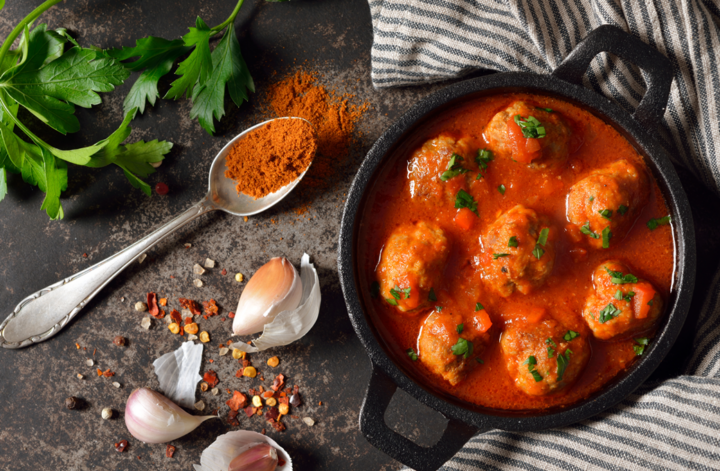This bread is a Styrian (Austrian) sanctum at Easter! It is sweet, white, lightly spiced and with raisins. It’s the fluffy base for the “Geselchtes” the cured & smoked meat of the area. The unusual combination goes best with a heaping spoonful horseradish on top. And it is easy to make!
In Austria, at the last tip of Southern Styria, where I grew up, they still bake there own Easter bread and it’s the best in the world. My grandparents’ farm is nestled in the vineyards of Styrian Tuscany, on the hills rising east to the Kor Alps, near the border to Carinthia, Slovenia and Italy. Even for those who are not religious like me, Easter is a special occasion in the Schilcher region because it includes a Styrian culinary highlight: the Easter snack (Osterjause). This sweet Easter bread, which is cheekily but smartly combined with savory foods, is the most important foundation for a brilliant Easter snack.
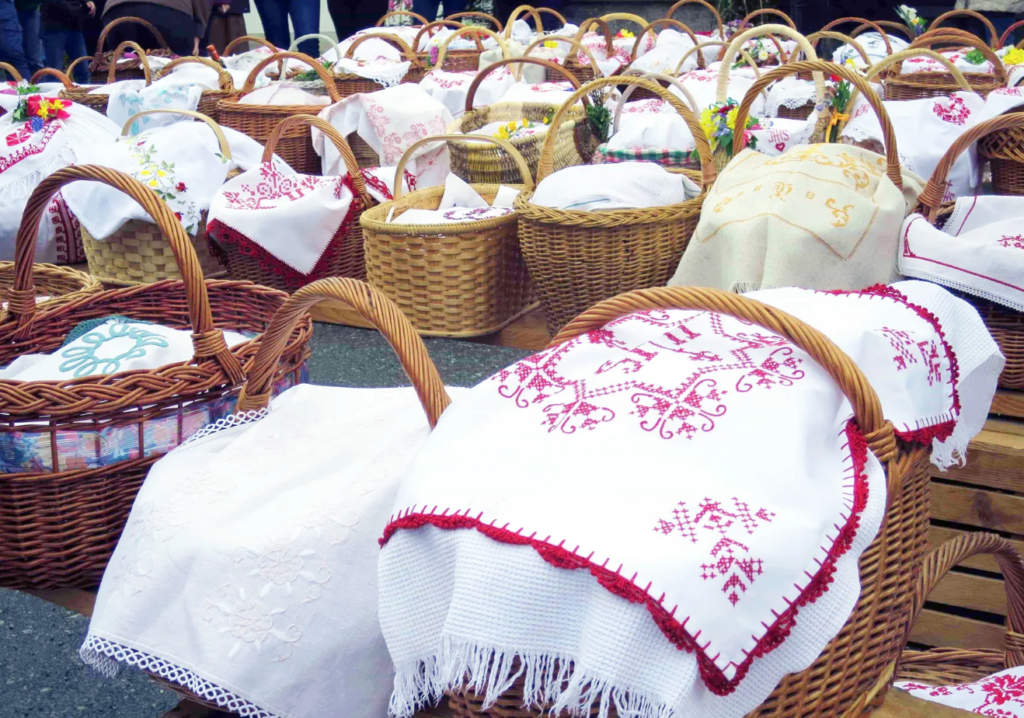
Easter bread in South Styria
Baking bread was always granny’s domain. A few days in row before Easter, alway at dawn, Grandma used to sneak out of the house on this old creaking wooden floor. That was always audible, nevertheless I consistently fell asleep right away, glad I didn’t have to get up yet. During this time, the old kitchen next to the barn was transformed into her steaming bakehouse, with sauna-like temperatures. As a child, I thought it’s quite cruel that I was not permitted to taste the bread straight away. That was strictly forbidden. The bread was traditionally served after the Easter consecration, which in this area is almost as important as Christmas.
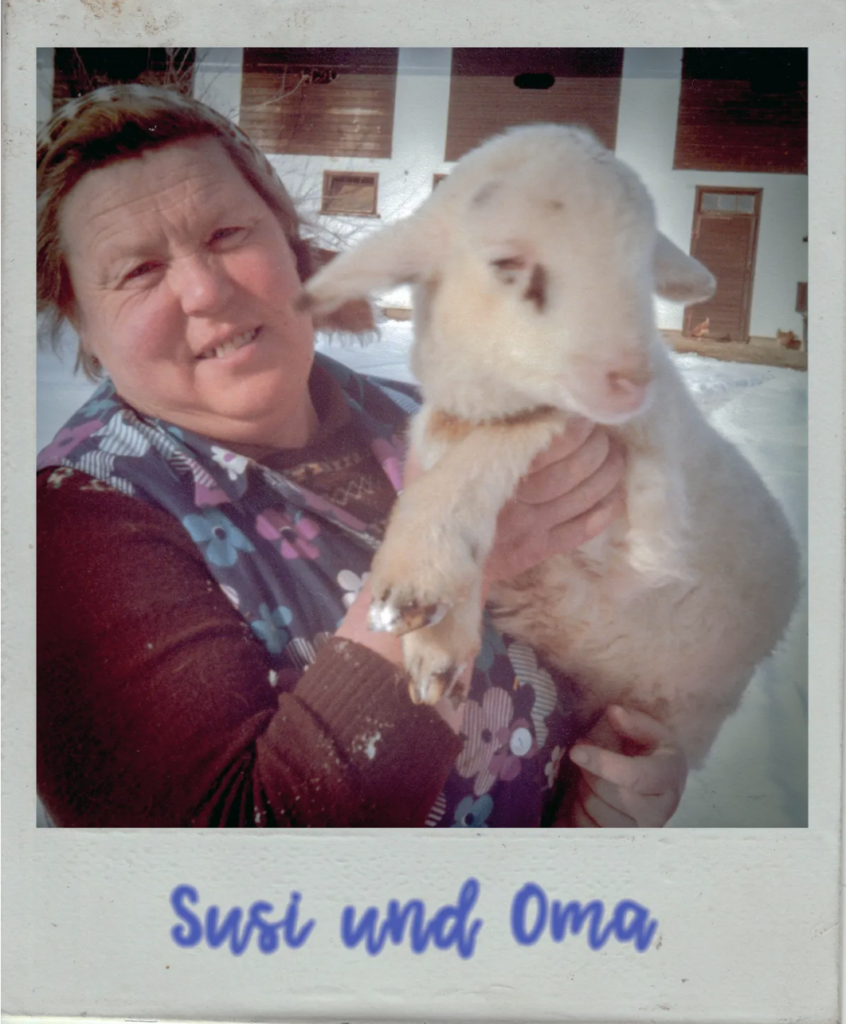
This bread is easy!
It is often challenging to create the ideal bread environment while baking bread at home. That is, to provide enough heat so that the yeast bread rises properly. In my recipe, I share a few things I learnt from my granny and that you can easily replicate. As a result, every yeast bread rises beautifully. By the way, if you want to start baking bread, the Easter bread is a decent starting project.
Styrians always choose to serve sweet and savory Easter bread at the Easter meal table. One wishes to be polite. And never forget the schnapps! “You don’t need to make Easter bread without wine and schnapps inside,” Grandma always said. The alcohol evaporates while baking, resulting in an especially fluffy dough. Also from granny: your kitchen should be evenly heated, and drafts should be prevented throughout the procedure, or the dough would collapse. Beat the dough at least twice (!) and let it rise.
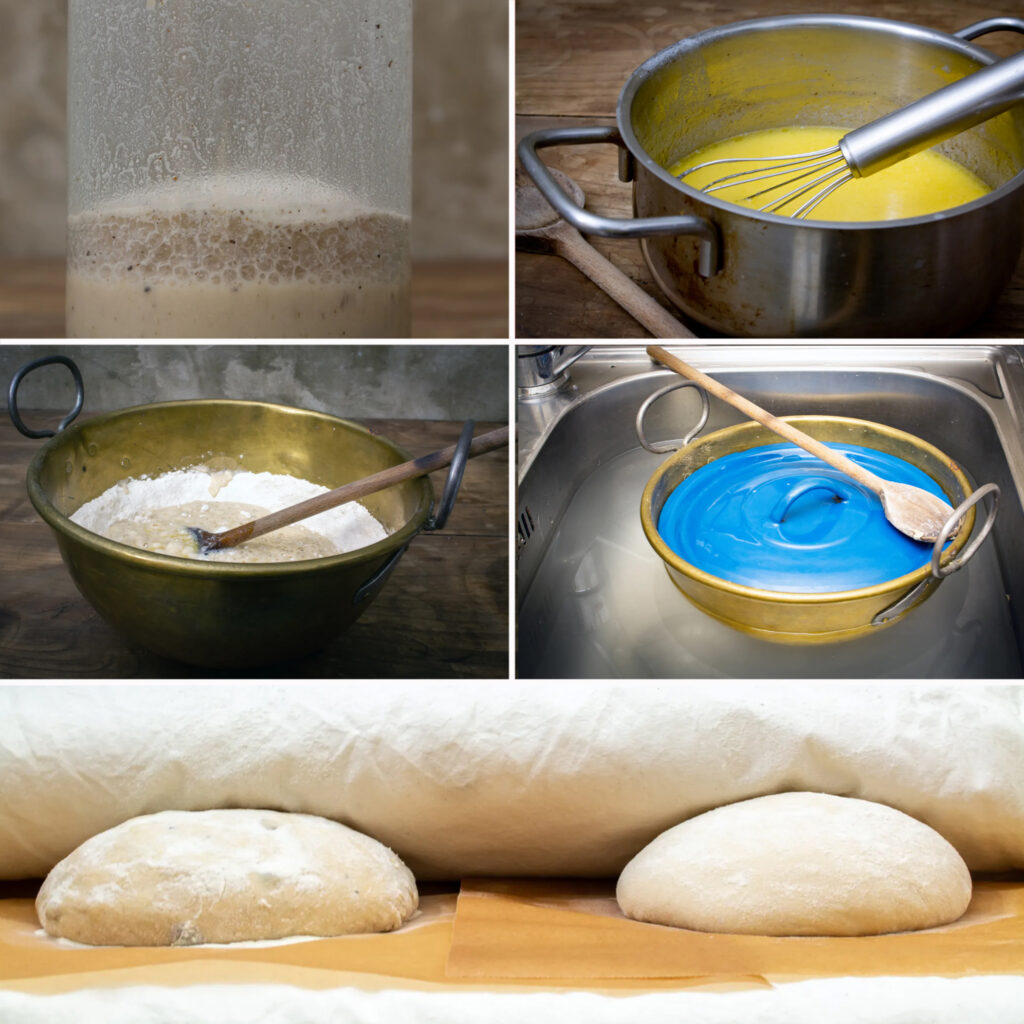
Speziel Equipment:
- Sealable bowl that fits in the kitchen sink
- Electric blanket (if available)
Styrian Easter bread: the holy bread of my granny
Cuisine: Styrian(Austrian)Difficulty: Medium30
minutes1 – 2
hours45
minutesStyrian Easter bread is sweet, white, lightly spiced and with raisins. It’s the fluffy base for for another local speciality: the Styrian cured & smoked meat. You best enjoy the curious combination with a heaping spoonful of fresh grated horseradish on top.
Ingredients:
500 g wheat flour Type 550 (all purpose flour)
185 ml milk
125 ml white wine, (if available a fruity wine like Styrian Morillon, Pinot Blanc, Pinot Gris, Moscato Bianco…
1 pinch of ground cloves
1 pinch of ground cinnamon
50 g white sugar
25 g yeast or 1 package of dry yeast
70 g lard, if you don’t have that take butter (for a vegan version use plant-based butter)
1 shot of schnapps
½ tsp salt
Raisins, a handful
A little milk to coat
Directions:
- Gently boil the wine and milk with the sugar and spices until the sugar dissolves. The liquid should be lukewarm, between 35 and 38° Celsius (95 to 100° Fahrenheit).
Dry yeast: Pour half of the liquid into a glass and set aside. Add the dry yeast to the liquid and let stand for 10 minutes. Tip: If you’re using dried yeast, this is a nice way to see if it’s still active. If it doesn’t froth somewhat after 10 minutes, discard it and try again with a different package.
Fresh yeast: Mix the fresh yeast into half of the lukewarm spiced milk. Then mix with 100 g flour, cover, and place in a warm spot, such as the back of the fridge, where warm air always rushes up. The mixture is ready when it has doubled in volume. - Add the shot of alcohol and the lard (or butter) to the remaining half of the spiced milk. When the fat is melting, weigh the flour and combine it with the salt and raisins. Use the sealable bowl.
- Combine the flour with the two liquids. Stir in with a wooden spoon, gradually bringing the mixture together. The dough is really sticky. For about 5 minutes, beat the dough from the border of the bowl to the center with a wooden spoon. Yeah, this is exhausting; think of it as a spring workout. Continue to beat until the dough is lovely and even, but still rather sticky.
- Place the lid on the bowl and fill the sink with warm water (between 35 and 38° Celsius). The dough-filled bowl goes in there. Let the dough to rise until it has doubled in size. Roughly 30 minutes. Then, take out the bowl and “beat” the dough again, knocking the air out of it. Then let it to rise again. Just add warm water once the water has cooled. When the dough has doubled in bulk, beat the air out of it once more.
- Take the dough from the bowl and set it on a lightly floured work surface. Form an even ball and set it on a sheet of baking paper. Warm up your electric blanket. My electric blanket is set at level one. Wrap once, then line with a sheet (as shown in the photo) and place the loaf inside. For around 30 minutes.
- Preheat the oven to 190° Celsius. On the bottom of the oven, place an ovenproof dish filled with hot water. Milk should be brushed on the bread. I like to add a pinch of turmeric to my milk. This adds a wonderful color to the bread crust. Place the loaf on a hot baking sheet lined with baking paper and bake for 45 minutes, or until well browned. Let to cool completely before cutting.
Notes:
- The traditional Easter bread is served with Styrian cured & smoked meat a generous amount of freshly grated horseradish, hard-boiled eggs, Easter-Krainer (Carniolan sausage) various pickles, cheese and bread spreads as Kürbiskernaufstrich (pumpkin seed bread spread) . If you don’t have access to deli ham, just use any other form of ham.
Happy Easter greetings!

